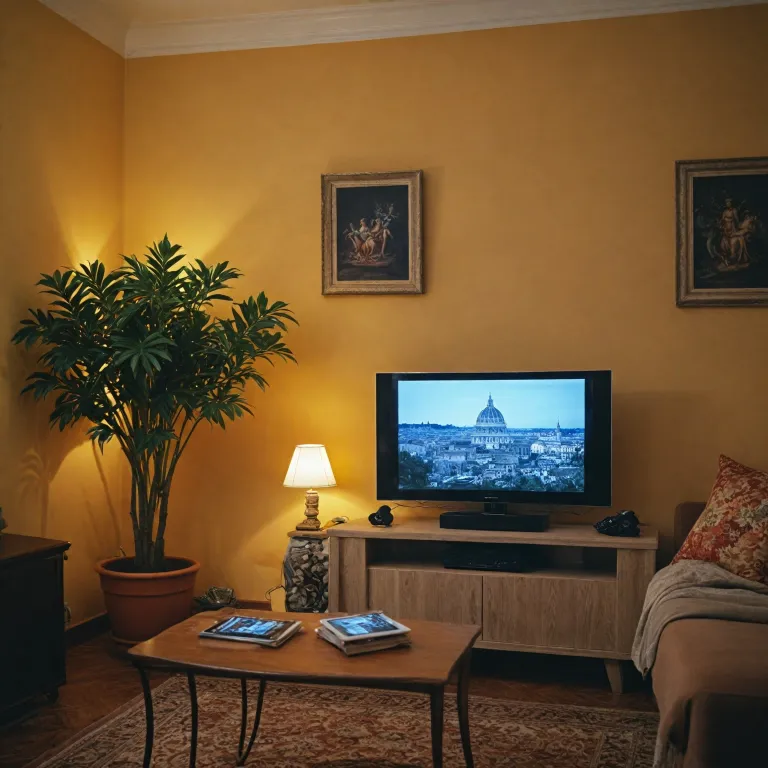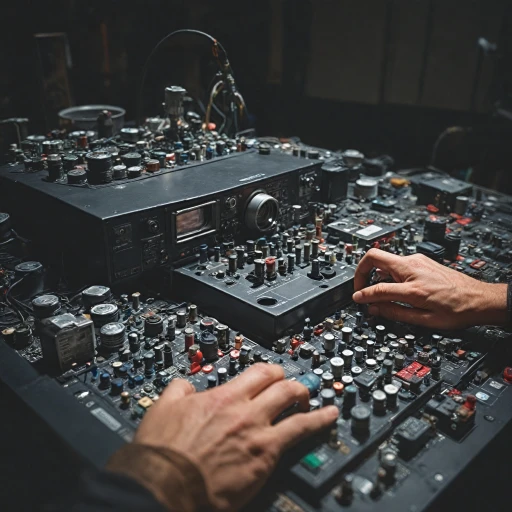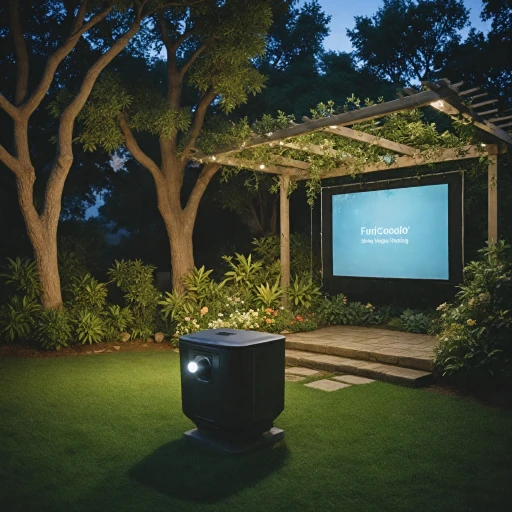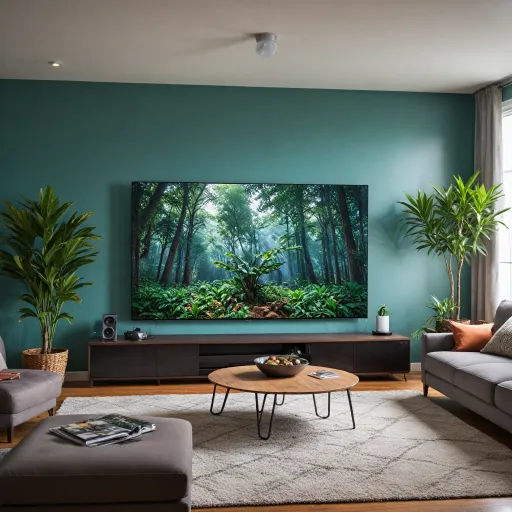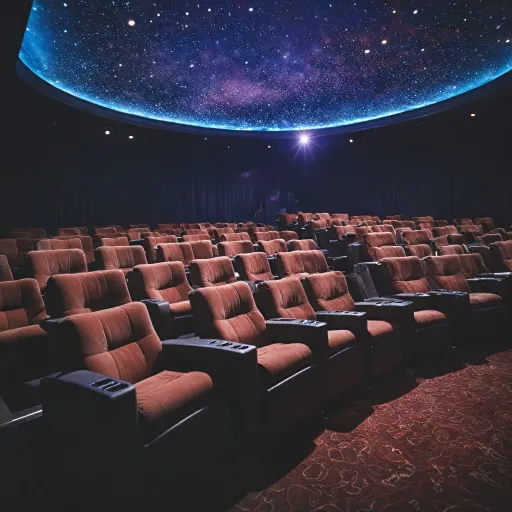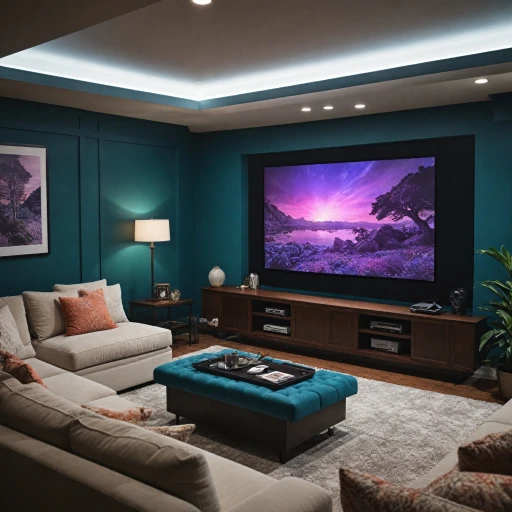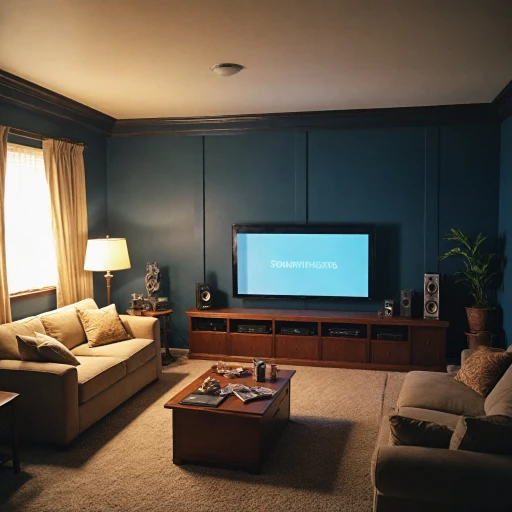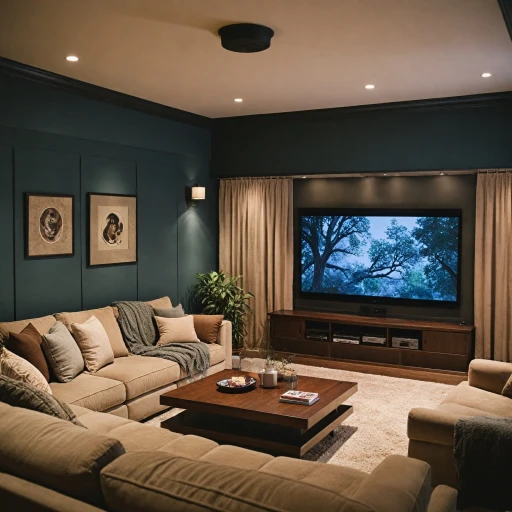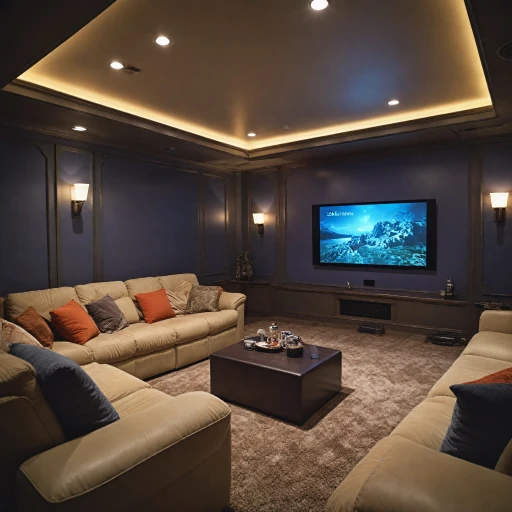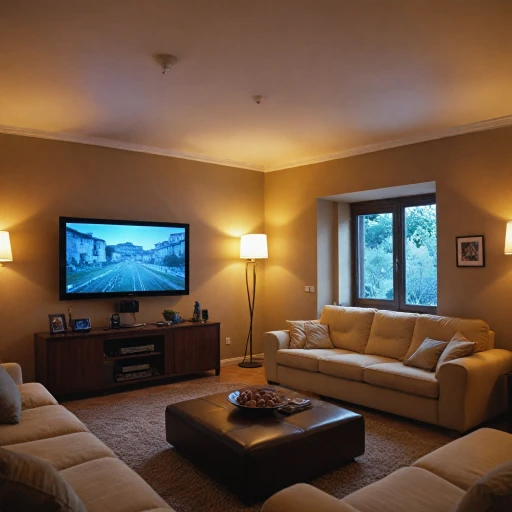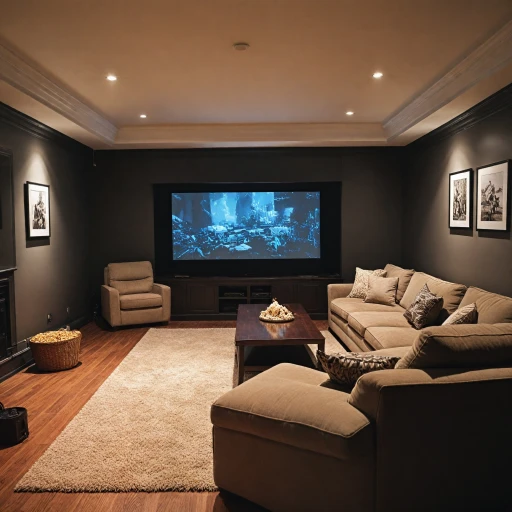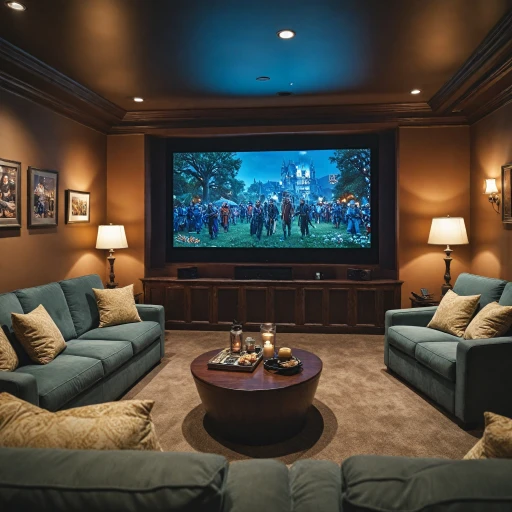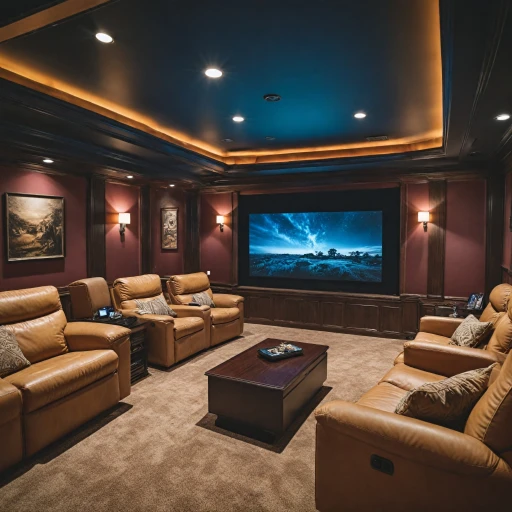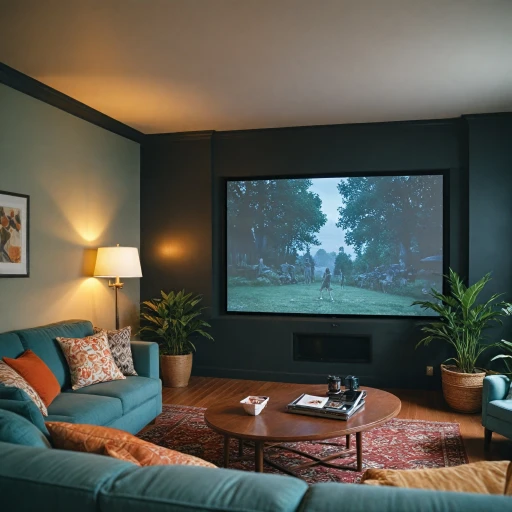
Understanding the Basics of Phone Projection
Discovering the Basics of Using Your Phone as a Projector
In the quest to convert your smartphone into a fully functioning projector, understanding the rudimentary mechanics behind the process is essential. The key technique here revolves around harnessing the light from your phone screen and magnifying it through a lens to project an image onto a screen or wall. This simple setup mimics the principles of classic projectors, allowing you to improvise a home theater experience with items you likely already possess.
Primarily, the transformation relies on altering the position of your phone and embedding it within a secure box, often referred to as a projector shoebox. The box functions to obscure external light, enhancing the visibility of the projected image on the selected surface. Core to this setup is a magnifying glass lens, acting as the critical component that amplifies and directs the light from your phone screen.
Proper placement of the lens involves precise measurements, ensuring it's centered within a cut opening of the box. Stability in setup is achieved using double-sided tape, securing both the lens and phone into their optimal positions.
The role of your smartphone is dual; it's not only the source of media but also the light emitter. To optimize the clarity and size of the projection, adjusting the distance between the lens and the phone screen is necessary. Manipulating these variables will affect the focus and sharpness of the image, which you can fine-tune for a better viewing experience.
For enhancing your home theater experience, exploring advanced options such as integrating Bluetooth sound systems can elevate the overall impact, offering richer audio quality alongside the visual projection.
Essential Tools and Materials Needed
Gathering Your Essential Tools
Before diving into the exciting world of transforming your smartphone into a home theater projector, it’s crucial to gather all the necessary tools and materials. This preparation will ensure a smooth process and enhance the quality of your projected image. Here’s what you’ll need:
- Smartphone: Your phone will be the heart of this DIY projector. Ensure it has a bright screen and good resolution for the best results.
- Magnifying Glass: This will serve as the lens to magnify the phone screen. A larger lens will generally provide a better image.
- Shoebox: A sturdy box will act as the body of your projector. The size should comfortably fit your phone and the magnifying glass.
- Double-Sided Tape: Use this to secure the lens and phone in place.
- Black Paper or Paint: Lining the inside of your box with black material will help absorb excess light and improve image clarity.
- Utility Knife or Scissors: You’ll need these to cut holes for the lens and phone.
- Ruler and Pencil: These will help you measure and mark where to cut and place your components.
Positioning and Assembly
Once you have all your materials, the next step is to assemble your projector. Start by cutting a hole in one end of the shoebox to fit your magnifying glass. This will be the lens place where light from your phone screen will pass through. Secure the lens with double-sided tape to ensure it stays in position.
Next, line the inside of your box with black paper or paint to minimize light leakage and enhance the projected image. Position your phone at the opposite end of the box, ensuring the screen faces the lens. Tape your phone securely in place to prevent it from moving during use.
For more detailed guidance on choosing the right projector setup, you might want to explore this guide which offers insights into selecting the ideal projector for various settings.
Step-by-Step Guide to Creating a DIY Projector
Creating Your DIY Smartphone Projector
Transforming your phone into a home theater projector can be an exciting DIY project. Here's a step-by-step guide to walk you through the process of crafting your own phone projector at home.
First, gather the necessary tools and materials identified in the previous discussion. A shoebox, a magnifying glass, and a smartphone are essential components you'll need. Remember that the lens from the magnifying glass will be crucial in enlarging the image coming from your phone screen.
Begin by preparing your box. Find a stable and flat place to work on. Use a light pencil to trace the outline of your magnifying glass on one of the short sides of the box where you’ll cut a hole. This hole will need to snugly fit the glass.
Use a craft knife or scissors to carefully cut along the traced line. Once the hole is ready, secure the magnifying glass into position using double-sided tape or a hot glue gun. This action will ensure your magnifying lens stays firmly in place when projecting the image.
Next, you’ll want to tape your phone securely inside the box. Ensure the phone screen is facing the lens, and you'll need to align it properly to ensure the projected image is clear and the correct way up. Consider placing the box in a darkened room and play a video on your phone to get the best results. Adjust the position of the lens, phone, and box as necessary to obtain a crisp image on the screen.
Check out our comprehensive guide for insights into advanced projector features. Remember, creativity combined with these steps will pave the way for transforming your DIY aspirations into a functional piece of entertainment art.
Optimizing Image Quality and Sound
Enhancing Your Projector for Clear Image and Sound
To transform your phone into an effective home theater projector, ensuring optimal image quality and sound is pivotal. Primarily, start with positioning your projector shoebox in a dimly lit environment. The lesser the ambient light, the sharper your projected image will be. Position your projector in such a way that the phone screen is directly aligned with the magnifying glass. This alignment helps to focus your smartphone’s display effectively, enhancing the quality of the projected image. Use your magnifying glass as your lens and ensure it is clean and free of scratches. A clear lens will allow the light and images from your phone to pass through more effectively, delivering a crisp view on the screen. To secure your magnifying glass in place, you can use double-sided tape to attach it firmly onto your box. It’s crucial that the lens stays steady to prevent any distortion in the image. If the image appears inverted, turning your phone upside down can correct this. Additionally, adjusting the distance between the box and the screen can help fine-tune the focus. Moving the projector box farther from the wall or screen will make the image larger but may require further adjustments to maintain sharpness. For an enhanced auditory experience, connecting an external speaker to your phone can significantly improve the sound output. Many phones feature a headphone jack or Bluetooth capability, allowing you to link up with your sound system seamlessly. Don’t hesitate to take a moment to adjust the brightness and contrast settings on your phone, as these will directly influence the clarity and vividness of the projected image. Experimenting with these elements is a hands-on way of optimizing your projector for home theater enjoyment. By following these steps, your projector can offer a cinema-like experience right in your own home. Always remember, a bit of patience and experimentation is vital in achieving the best results with your DIY phone projector setup.Troubleshooting Common Issues
Resolving Frequent Phone Projector Obstacles
Creating a homemade projector from a smartphone can be a delightful DIY project, but it doesn't come without its hurdles. By addressing common pitfalls, you can enhance the quality and enjoyment of your viewing experience. Here’s a guide to troubleshooting frequent issues.
Improving Image Clarity
One of the most prevalent challenges is achieving a clear image. Start by checking the alignment of your lens and phone. The lens should be precisely positioned in the cut opening of your box. Ensure your phone screen is facing directly towards the center of the lens. Minor adjustments can significantly enhance the projected image quality. If blurring persists, clean your lens carefully, as dust can distort clarity.
Sound Enhancement
While the phone projector can provide a decent visual experience, sound quality often needs a boost. Consider using external speakers or a soundbar to elevate the audio experience. Pair your phone with Bluetooth speakers positioned around the room for surround sound that complements your DIY projector setup. This step dramatically enhances the overall theater experience.
Managing Light Sources
Extraneous light can severely affect the contrast and color depth of the projected image. Utilizing a darkened environment is key for vibrant colors and crisp details. Ensure your room can be sufficiently darkened. If undesired light seeps in, curtains or blackout blinds are good investments to improve contrast and brightness.
Stabilizing the Projector Setup
After assembling your projector using your box, magnifying glass, and smartphone, stability is crucial. Secure the setup with double-sided tape or other appropriate materials to prevent your phone or lens from moving during viewing. A stable setup minimizes image shifts and keeps the intended image accurately positioned.
Understanding Lens and Screen Dynamics
The interaction between your phone's screen and the magnifying lens is pivotal for quality projection. The lens will magnify the light emitted from your phone screen, and its place in relation to the smartphone determines the scale and focus of the image. If adjustments don’t yield results, experimenting with different phone placements within the box until the image aligns properly on your screen can be useful.
As you delve further into phone projection, remember that patience and experimentation are integral. With each adjustment and test, you can refine the experience, making your phone projector a reliable solution for home entertainment.
Exploring Advanced Features and Apps
Discovering Advanced Functions and Handy Apps
Once you have your phone projector set up, it's time to explore some advanced features and applications that can elevate your viewing experience. As your projector evolves from a basic setup to a more sophisticated system, these elements can provide added convenience and enjoyment.
Using Apps to Enhance Functionality
- Synchronization Tools: Apps like screen mirroring software can seamlessly integrate your smartphone's content with your screen. This will allow you to share videos and images directly to the projected image efficiently.
- Media Players: Leveraging apps that support various media formats ensures your projector shoebox performs at its best, playing a wide range of files from your phone screen.
- Image Adjustment: Certain applications help adjust brightness, contrast, and aspect ratio, optimizing the projected image for better clarity. This will enhance the viewing experience with richer colors and details.
Fine-Tuning for Precision
- Position Your Setup: Experiment with different placements of your projector and light source to achieve the desired magnification and sharpness. Positioning your lens glass correctly can significantly impact the size and clarity of the image.
- Adjust Your Magnifying Glass: Shifting your magnifying lens can be a trial-and-error process. However, once you find the sweet spot, the projected image will be sharper. Tape your lens in place once you've found the optimal positioning, preventing any shifts during playback.
Seamless Accessibility
- Voice Assistants: Many smartphones come equipped with voice-activated technology, streamlining your ability to operate the projector hands-free. This step goes beyond just setting up and into maximizing daily use.
- Privacy Considerations: If you're projecting sensitive content, ensure your phone's privacy policy settings are activated to avoid accidental sharing. Searching through settings can reveal privacy controls to secure your content.
By utilizing these advanced techniques and incorporating useful apps, your phone projector's performance will exceed expectations, transforming simple projections into an immersive experience. Take these extra steps to ensure your DIY setup isn't just functional but exceptional in its delivery.
